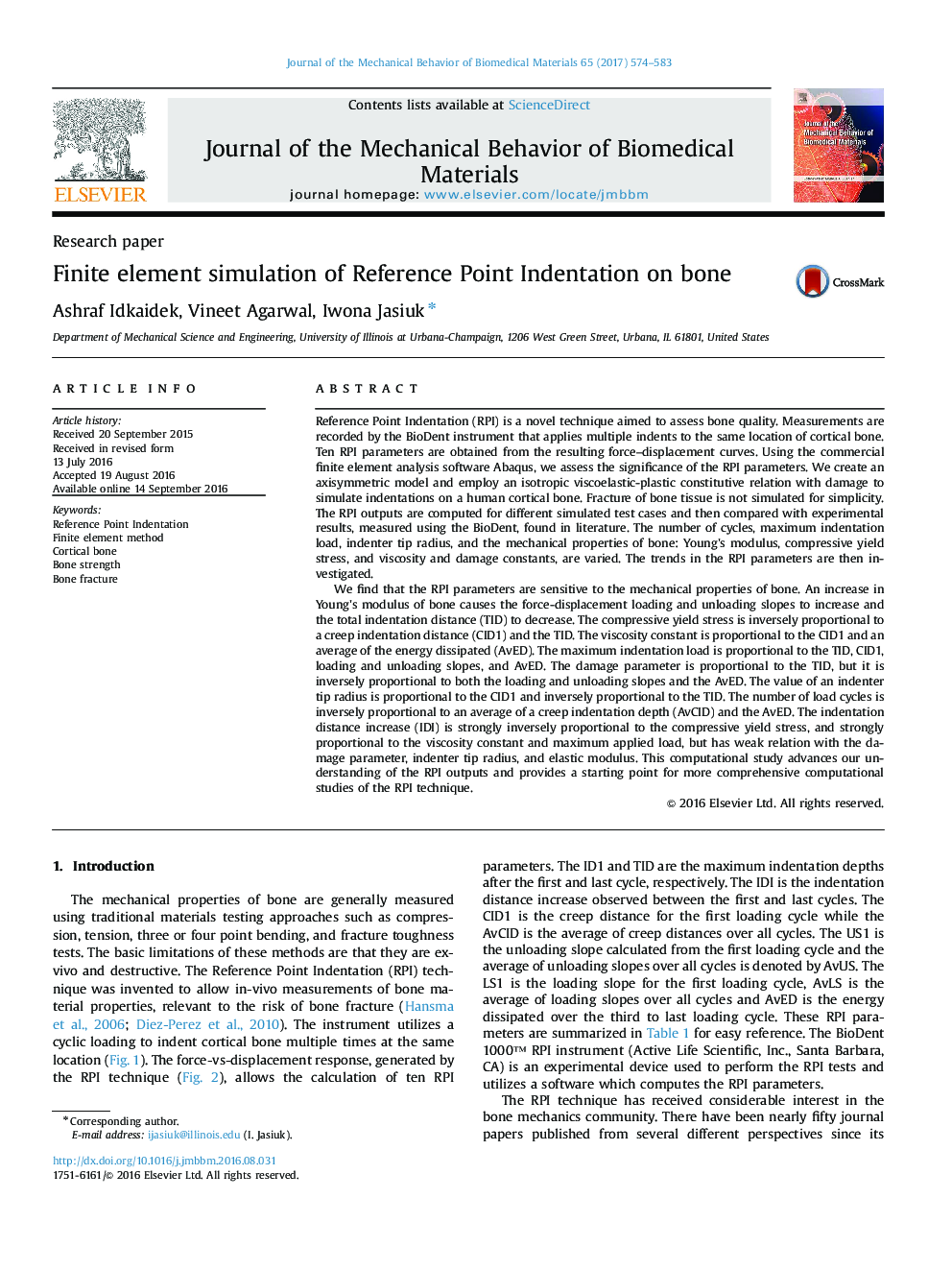| Article ID | Journal | Published Year | Pages | File Type |
|---|---|---|---|---|
| 7207581 | Journal of the Mechanical Behavior of Biomedical Materials | 2017 | 10 Pages |
Abstract
We find that the RPI parameters are sensitive to the mechanical properties of bone. An increase in Young׳s modulus of bone causes the force-displacement loading and unloading slopes to increase and the total indentation distance (TID) to decrease. The compressive yield stress is inversely proportional to a creep indentation distance (CID1) and the TID. The viscosity constant is proportional to the CID1 and an average of the energy dissipated (AvED). The maximum indentation load is proportional to the TID, CID1, loading and unloading slopes, and AvED. The damage parameter is proportional to the TID, but it is inversely proportional to both the loading and unloading slopes and the AvED. The value of an indenter tip radius is proportional to the CID1 and inversely proportional to the TID. The number of load cycles is inversely proportional to an average of a creep indentation depth (AvCID) and the AvED. The indentation distance increase (IDI) is strongly inversely proportional to the compressive yield stress, and strongly proportional to the viscosity constant and maximum applied load, but has weak relation with the damage parameter, indenter tip radius, and elastic modulus. This computational study advances our understanding of the RPI outputs and provides a starting point for more comprehensive computational studies of the RPI technique.
Related Topics
Physical Sciences and Engineering
Engineering
Biomedical Engineering
Authors
Ashraf Idkaidek, Vineet Agarwal, Iwona Jasiuk,
